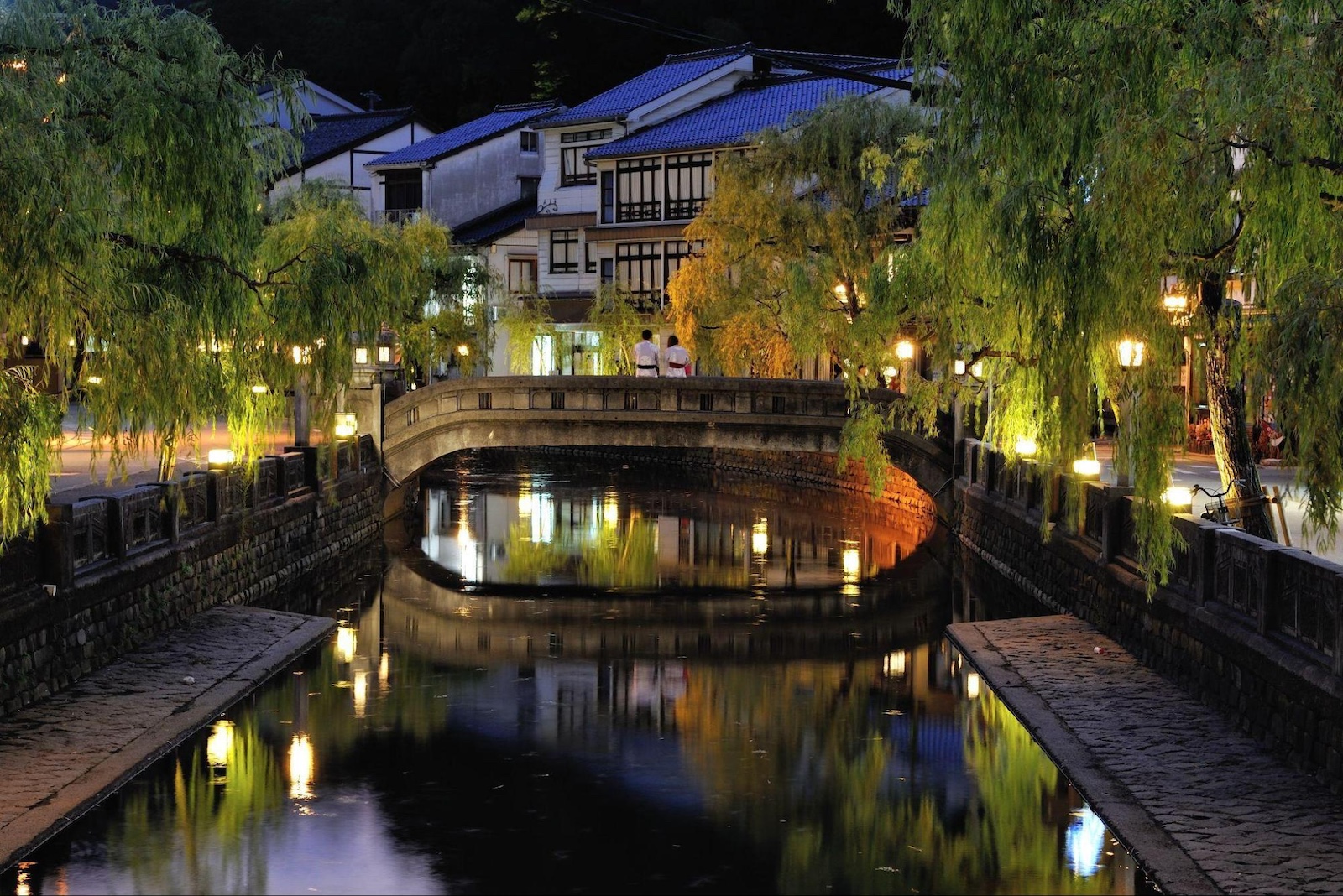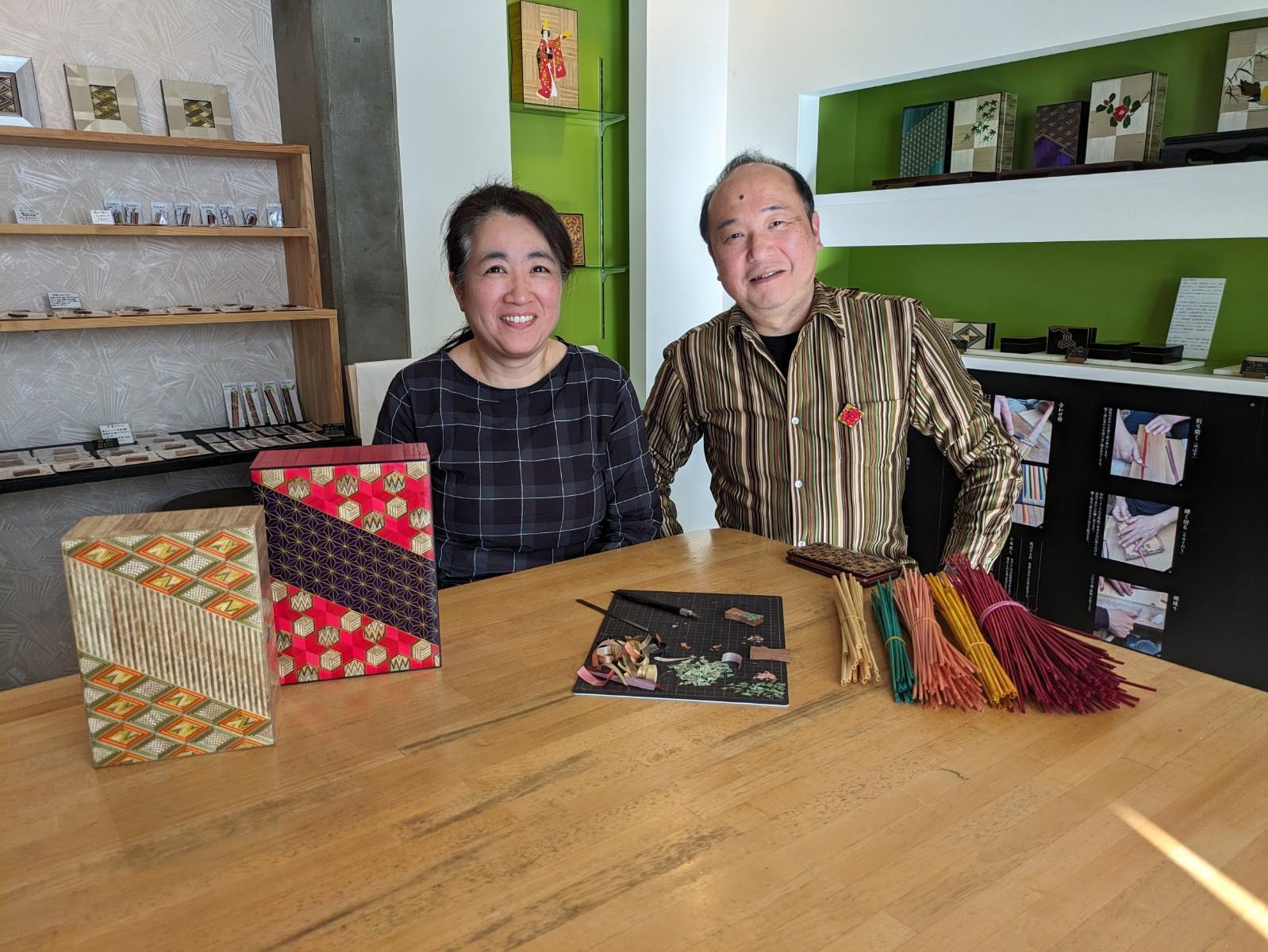Visitors to Japan’s town of seven mystic hot springs may be surprised to discover that Kinosaki Onsen in Hyogo Prefecture provides not only a tranquil respite for the human body’s physical ailments, but a lulling relief for the human spirit as well. Soulful travelers itching to dig a little deeper beneath the cozy hot spring town’s misty surface will be pleasantly surprised to discover a small but vibrant community of artisans, Kinosaki Onsen has long been touted as one of Japan's historic cradles of traditional artistry, nurturing creative inspiration for centuries while welcoming some of the country’s most celebrated virtuosos.

The hot spring retreat’s storybook streets have been the travel companions of literary legend Shiga Naoya, master woodcarver Keimon, and Hanhichi, the 18th century founder of mugiwara zaiku, also known as straw craft and Kinosaki Onsen’s local traditional art form.

The tale of Hanhichi’s fateful journey to Kinosaki Onsen is not known for its glamorous beginning. A wayward craftsman from what is now known as Tottori Prefecture, Hanhichi found himself in Kinosaki Onsen with little more than the clothes on his back and a colorful mind filled with creative ways to fund his travels. To make money to pay for his lodging expenses, Hanhichi sold bamboo flutes and spinning tops decorated with colored straw to locals and visitors.
This “straw craft” was also used to decorate chests, boxes, and wooden prayer plaques with elaborate designs mirroring the artistry of woodcarvers and painters. Craftsmen following in Hanhichi’s footsteps increased throughout Kinosaki Onsen, and soon enough a centralized community of straw craft artisans flourished in the town.

Toshiaki Kamiya is one of Hanhichi’s modern-day successors, a local legend with over three decades of experience under his belt. “I originally went to Kyoto for university. I studied Japanese painting,” Kamiya recalls. “I worked as a gold leaf artisan for kimono and obi embellishments after graduation. I imagined myself in that field for the rest of my career.”
His time in the kimono industry proved to be a short-lived venture, however, as a devastating blow hit home - Kamiya’s father became hospitalized after a traffic accident on his bicycle. “I came back home to Kinosaki Onsen after that and decided to try out straw craft.”
At this time Kamiya started his professional straw craft journey, helping his father by making postcards with the colorful straw to sell in the family shop. "The first straw craft piece I made was for my middle school graduation. I made something for my teacher, but I can't remember what it was."
Kamiya, now running his own straw craft shop, is not alone in his endeavors. His wife, also a Kinosaki Onsen local, has embarked on her own straw craft journey, creating chopstick holders, hair bands, and brooches. “During COVID, he asked me if I wanted to try. I noticed that we had a lot of leftover straw from other crafts, and I wanted to make something with them so they wouldn't be wasted. Now, I've been doing this for five years. I want to continue working together forever.”

A passion for straw craft runs in the family’s blood, as explained by Kamiya’s father, Masaru: “My own father was a straw craftsman, and then I became one as well. After school, I would watch him at work.”
Masaru recalls his father originally being against having a son follow in his footsteps. He decided to try and become a Japanese sweets artisan at first, working at a local sweets shop in Kinosaki Onsen. “I worked there as a sweets artisan for one year, but the owner then asked me to make straw craft souvenirs for his shop,” he said.
After some convincing from the shop’s owner, Masaru’s father eventually agreed. “My father was worried about the money. Even 8 hours of work in straw craft yields small results.”

And while this traditional art form does indeed require extreme attention to detail with quality over quantity being the craft’s mantra, both Toshiaki and Masaru have discovered a lifelong passion in creating gorgeous designs with straw craft. The process starts with barley in its most organic form - colorless, raw, and still wrapped inside its husk. Once the barley is harvested and the husks removed, the shiny stalks are then boiled in mixtures of hot water and a rainbow of dyes. Once dried, the stalks are finely sliced down the middle and flattened using a bamboo tool. Once the stalks are flattened, the craftsmen unleash their creativity, pasting the straw cut in various shapes and sizes onto boxes, postcards, and even cell phone charms using a mixture of rice and water for adhesive.

The intricacies of straw craft have dazzled not only locals. Sachiko, one of Kamiya’s straw craft trainees, was so impressed with the art form during his trip to Kinosaki Onsen that she made the move from Tokyo. “The first time I saw straw craft was at an inn I was staying at in Kinosaki Onsen. I thought it was a painting at first!” Sachiko recalls. “But the staff told me that it was straw craft, and then I went to Mr Kamiya's shop to try it out myself.”
Sachiko eventually did more than just “try out” a straw craft activity for a day - immediately after her visit to Kinosaki Onsen, plans to move from Tokyo were put in motion.
Within a month of her first visit, Sachiko was back in Kinosaki Onsen not as a tourist, but as a staff member for an inn. On her days off, she would practice creating straw craft designs on brooches and boxes until Kamiya offered her the chance to study straw craft professionally as his pupil. “Mr Kamiya is a very kind teacher.”

Straw craft has also garnered attention from Kinosaki Onsen’s international visitors. Kamiya even recalls one woman from Australia spending her entire weeklong stay in town at his workshop completing a box standing about one foot tall. While this is an admirable feat requiring multiple days of razor-sharp focus, guests on a tighter schedule are welcome to create a smaller box through a reservable activity or a bookmark with a Kinosaki Must-Visit Pass.
- External Link
- https://visitkinosaki.com/














1 Comment
Login to comment
餓死鬼
The craftwork is amazing and it would definitely be something to be proud of to have a piece you made yourself to display and show off. However, it seems to be of a level of painstaking precision that would send me into OCD overdrive. Respect for the dedication of the Australian lady.